Andrew Rule: We can’t distort truth of African gangs crisis
WE had warnings about Melbourne’s youth gangs a decade ago, but authorities have spent much of that 10 years apologising for the offenders rather than dealing with them, writes Andrew Rule.
Law & Order
Don't miss out on the headlines from Law & Order. Followed categories will be added to My News.
IN SOME families, the high achievers are Rhodes Scholars or Olympians. In others, mum and dad are proud of the one that didn’t jump bail or get a swastika tattoo on her neck.
In the middle are the rest of us, families whose achievements might be a personal-best exam mark or some middling sporting success.
With three kids — “one of each”, as someone once wisecracked — you end up with a collection of memorable moments from school concerts, footy and basketball games and the like.
Yet of all the things your children achieve, you might be less proud of the trophies or team photos than of what they have done to help others without payment or applause — such as finding time to teach English to young migrant kids in the Richmond Housing Commission flats.
INTERSTATE THUGS BEHIND WILD BRAWLS
GANG CRISIS: NEW INTEL ON CORE APEX MEMBERS

My son now has his time cut out minding kids of his own but he still says a big hello to his favourite former “pupil”, now a lanky teenager he occasionally sees shooting hoops or dribbling a soccer ball around Richmond streets.
That boy, born in northern Africa, fits the profile of the youths at the centre of outbreaks of gang violence now plaguing Victoria.
But whereas he has chosen to be a good citizen, chosen to learn instead of to hate, others with a similar background have gone the other way. This, regrettably, is why youths “of African appearance” are over-represented in the gangs that rob shops armed with guns and hammers, brazenly “carjack” luxury cars and terrorise people in the street and their own homes.
The gangs’ victims are often migrants, too — many with stories of hardship and trauma to match those experiences predictably offered as excuses for the barbarous behaviour of African gang members.
TEEN THUGS TAUNT POLICE ONLINE
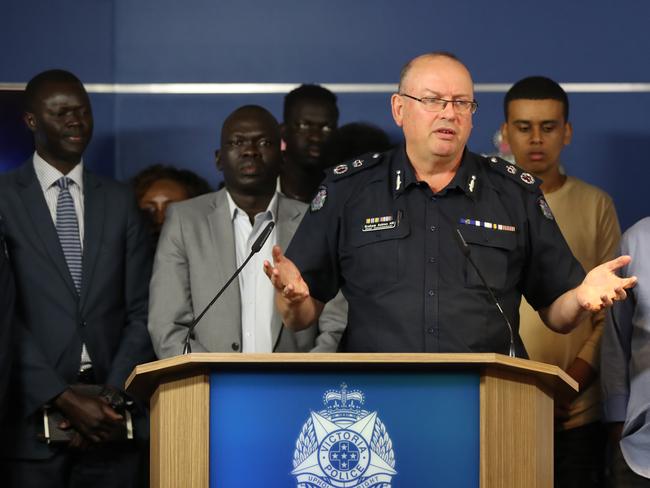
But apologists for appalling criminal acts gloss over such inconvenient facts because it doesn’t fit the fashion they follow. You wonder if the apologists notice how often the victims of predatory violence are either Indian or Asian and how often the aggressors belong to neither of those groups — a lopsided ratio that also applies to the inmates of youth-training centres hit with violent riots in recent years.
Theo Theophanous rightly reminded us in the Herald Sun opinion pages last Tuesday that youth gangs are not new. Anyone who remembers the 1970s will recall the “sharpie” gangs — some based on suburbs, others on ethnic groups, which led to ugly clashes between enemies such as Ringwood Sharps, the Lebanese Tigers, the Broady Boys and the Jordie Boys.
Before the “sharps” were the “bodgies” and “widgies”.
Well before that were the razor gangs who took up cutthroat razors after handguns were outlawed in 1927, the height of the so-called Squizzy Taylor era. The worst of those young hoods sewed fish hooks into their coat sleeves to drag across people’s faces with devastating effect.
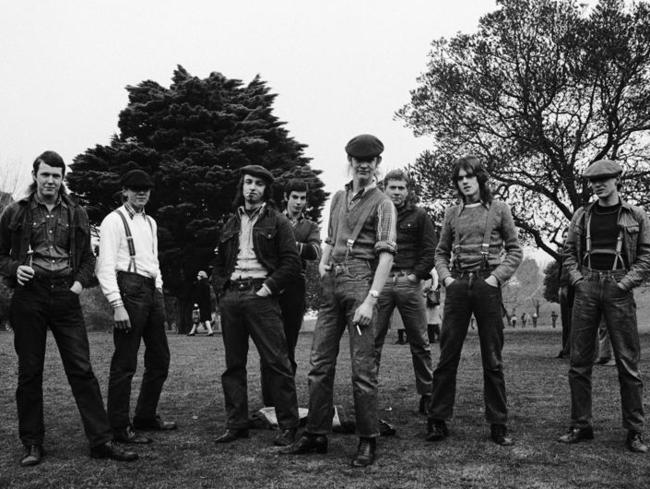
So there’s nothing novel about anti-social young men doing bad things if they are allowed get away with it. But there is one difference between the gangs of previous generations and the ones doing damage in the last decade — and that is that the police, with public backing, did not used to waste time apologising for them, or pretending they didn’t really exist, or that they were just a temporary nuisance.
In the 1920s mounted police carried pick handles to break up riots. In the 1950s a dedicated “Bodgie Squad” of heavyweight police was set up to take the fight up to violent young streetfighters. No-one much objected when street cops threw “sharps” and “skins” into divvy vans for time in the cells — or in jail.
But all that changed. And here is the proof. Just over 10 years ago, on October 16, 2007, the Herald Sun published an article by former Victoria Police Deputy Commissioner Bob Falconer, who had also served as Chief Commissioner of the WA force.
“Finally we have had some limited official confirmation of what most operational police, some school teachers and youth workers like Les Twentyman have known for years,” Falconer wrote.
“We have youth gangs in Victoria. Hopefully we will now see government and other agencies openly and actively addressing both the causal factors and the resultant anti-social behaviour.”
THUGS TRASH TARNEIT’S ECOVILLE COMMUNITY PARK
Falconer said he and Twentyman had warned about the rise of youth gangs years before 2007, but they had been drowned out by meaningless academic debate about “when a group became a gang”.
By ducking the job of honestly identifying a group of offenders committing anti-social and illegal acts, the authorities “bogged down on words instead of tackling the problem,” he wrote. This gutless cop-out effectively abandoned teachers already scared of entering their classroom because of repeated assaults. Government and police were “stymied”, he warned, because they were too coy to spell out which self-proclaimed ethnic gangs were at the centre of the violence.
This “politically-sensitive element” led to the “denial and deferral mentality that prevailed,” he wrote. “It is time to get past that aspect and deal with the offending youths …”
Falconer quoted from an interview with former New York Police Commissioner William Bratton, the well-known police chief credited with cleaning up crime in New York. Bratton asked the Canadian journalist interviewing him if the gangs problem in Toronto had a racial basis.
POLICE ON AMBUSH ALERT AS NEW MENACE JOINS APEX GANG
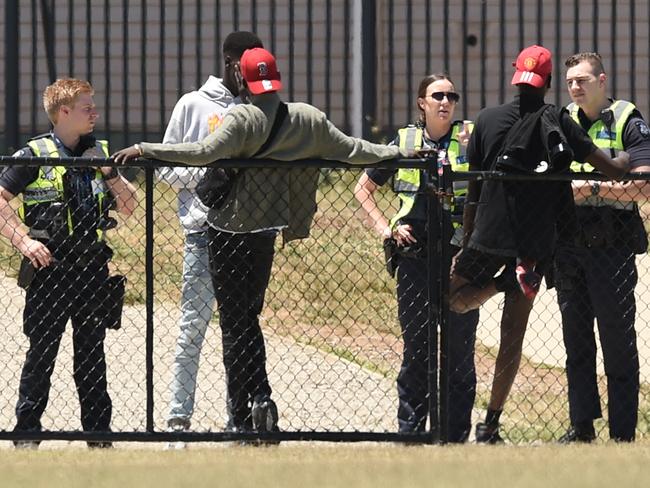
The reporter answered that “no one knows for sure, because people here don’t like to talk about that.” To which Bratton replied: “You need to talk about it. It’s all part of the issue. If it’s Jamaican gangs that are committing crimes then go after them. And don’t be afraid to go after them because they’re black. That’s the last thing you need to be concerned with.”
Falconer quotes an African-Australian commentator who said: “In every society there is good and bad people. The majority are good. If it happens that some of the African elements in Australia are causing problems, then they must be dealt with by the law”.
But the growing problem stayed buried under a pile of weasel words and false assumptions as bureaucrats, senior police and politicians on both sides distorted the truth to avoid saying or doing anything that might draw criticism.
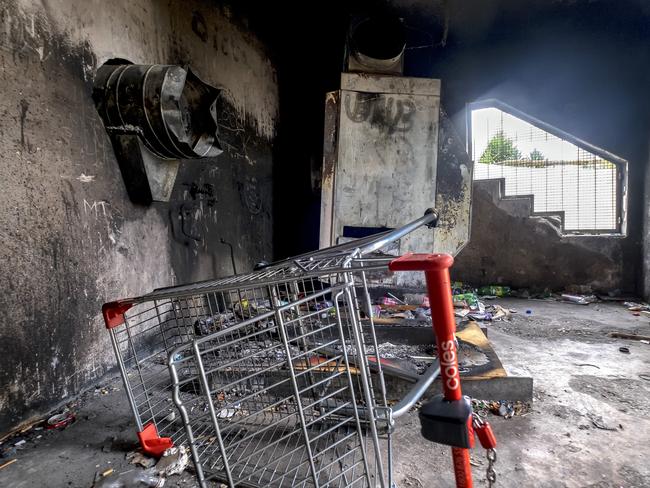

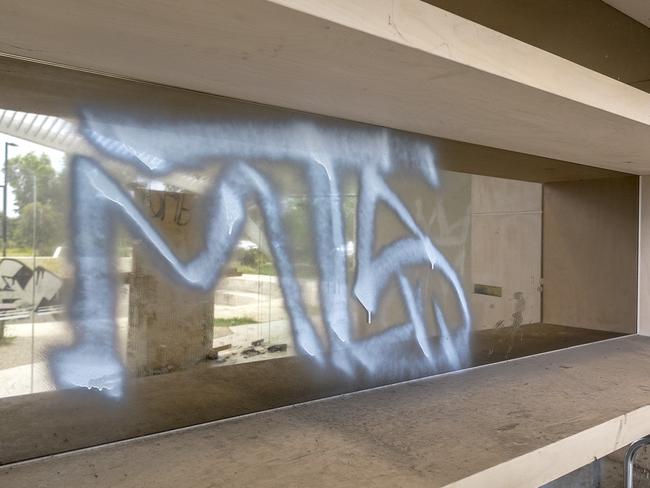
The result? The gangs that were not called gangs grew stronger and got away with worse outrages as street police, muzzled by their own leaders, went soft because of the likelihood of political fallout.
Ten years on, nothing has changed except the size of the problem. Tarneit, site of the latest wave of robberies and assaults, has the letters “MTS” sprayed on smashed walls and furniture in a public building destroyed by criminal vandalism. It stands for “Menace To Society”, a group linked to the so-called Apex Gang.
How long before gangbangers with a stolen spray can start daubing walls with the letters OAA? Meaning “Of African Appearance.” It just hasn’t occurred to them yet.
Meanwhile, someone should paint a slogan on the doors of our politicians: “Asleep at the Wheel.” Much like their predecessors.

